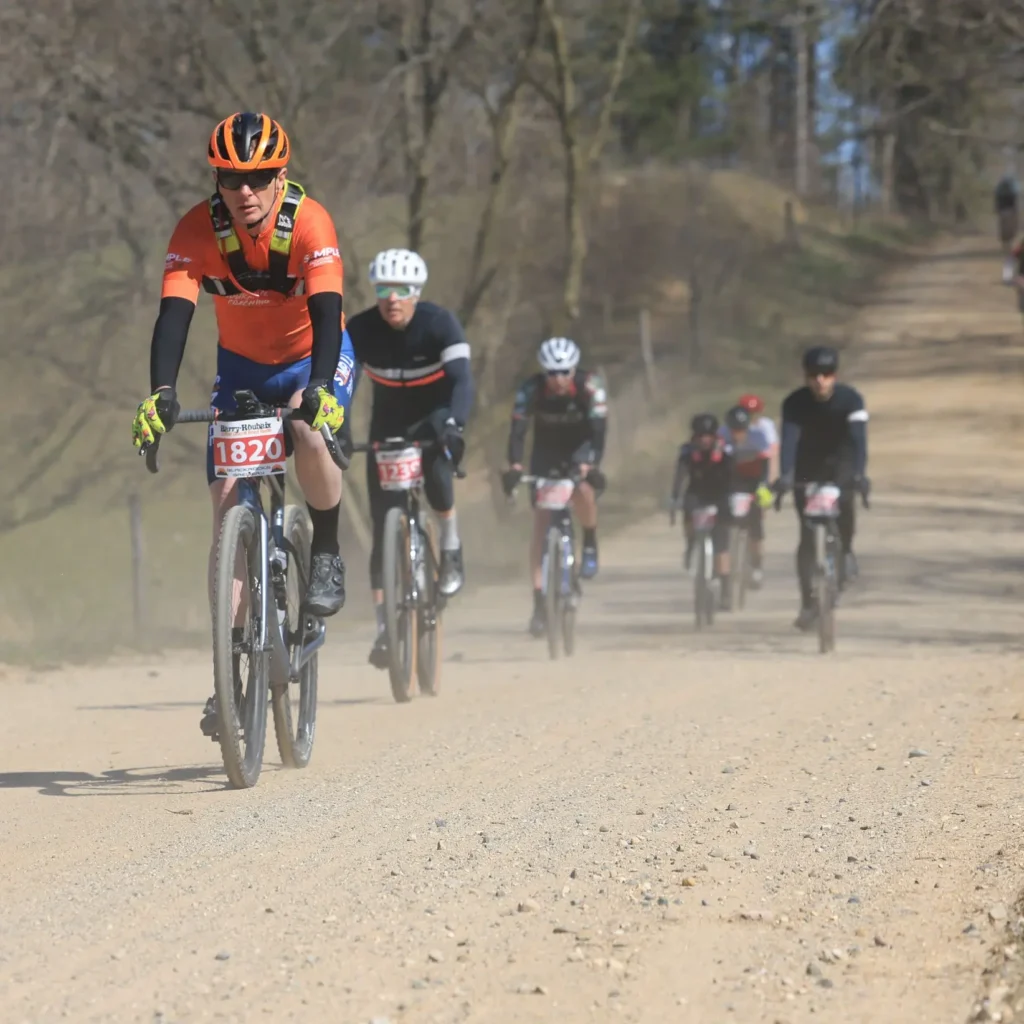Your Guide To Training And Racing Cyclocross For Your Best Performance
Are you ready to take your cycling game to the next level?
If you’re looking for a thrilling, adrenaline-pumping sport that combines off-road adventure with intense competition, then cyclocross might just be your ticket.
Cyclocross racing is like no other – it’s fast, it’s furious, and it’s the perfect blend of skill, strategy, and sheer determination.
Whether you’re a seasoned cyclist or new to the world of racing, this guide will provide you with all the information you need to train for cyclocross and achieve your best performance yet.

What is cyclocross?
Think of it as the wild child of the cycling world.
Cyclocross is a discipline that originated in Europe and has gained popularity around the globe.
It’s a unique blend of road racing and mountain biking, with a twist.
In a cyclocross race, riders navigate through a challenging course that includes grassy fields, muddy trails, steep hills, and even obstacles like barriers or stairs.
The courses are usually short but intense, typically lasting 30 minutes to an hour for most races.
But here’s where things get interesting: unlike traditional road or mountain bike races, cyclocross racers don’t stick to one type of terrain.
They have to quickly adapt to changing conditions as they encounter various surfaces throughout the race.
Cyclocross is often referred to as “the steeplechase of cycling” because it requires not only speed and endurance but also technical skills.
Riders must be able to handle their bikes with precision while navigating tight turns and tricky sections.
It’s high-speed chaos on two wheels – an exhilarating mix of power pedaling, bike handling finesse, and strategic decision-making.
What happens in a cyclocross race?
Cyclocross races are exhilarating, fast-paced events that combine elements of road cycling, mountain biking, and obstacle courses.
Picture a circuit with varying terrain – grassy fields, muddy tracks, steep hills – where riders push their limits to the max!
The race typically lasts anywhere from 30 minutes to an hour, depending on the category you’re racing in.
At the start line, you’ll feel a mix of excitement and nerves as you prepare for the intense effort ahead.
As soon as the whistle blows, riders sprint off like rockets!
The first lap is crucial for positioning because cyclocross races can get crowded quickly.
You’ll need to navigate tight turns, hop over barriers called “hurdles,” or even carry your bike up stairs!
Throughout the race, you’ll encounter challenging obstacles like sand pits and off-camber sections that demand excellent bike handling skills.
It’s all about finding your flow while maintaining speed and balance.
But what truly sets cyclocross apart is its relentless nature.
Unlike other disciplines where riders settle into a rhythm, cyclocross requires constant bursts of power: accelerating out of corners or powering up short climbs.
And let’s not forget about those unpredictable weather conditions!
Rain-soaked mud bogs can turn into slippery slides within seconds.
Being adaptable and ready for anything is key when tackling these challenging courses.
What skills do you need in cyclocross?
Skills play a crucial role in cyclocross racing, as the terrain and obstacles require specific abilities to navigate effectively.
Here are some key skills you need to excel in this challenging discipline.
- Bike handling: Cyclocross demands exceptional bike handling skills due to the varied terrain and technical features like steep descents, off-camber sections, and tight corners. You must be comfortable maneuvering your bike quickly and confidently.
- Mounting and dismounting: Being able to efficiently mount and dismount your bike is essential for navigating barriers or tricky sections that may require running with your bike. Practice smooth transitions between riding and running.
- Running: Despite being primarily a cycling sport, there will inevitably be sections where you’ll have to carry or push your bike through mud, sand, or other challenging surfaces. Developing good running form can give you an edge.
- Cornering: Sharp turns are a frequent occurrence in cyclocross races; mastering cornering technique can help maintain speed while conserving energy by taking efficient lines through bends.
- Remounts: Learning how to smoothly remount your bike after shouldering it can save valuable time during races when obstacles demand repeated dismounts.
- Balance and stability: The ability to stay balanced on uneven surfaces is vital for maintaining control over your bike when faced with rough terrains such as gravel or muddy paths.
- Quick decision-making: Cyclocross courses often present unexpected challenges that demand split-second decisions on line choice, gear selection, or tackling obstacles effectively.
- Strategy and Tactics: In addition to the physical skills mentioned above, developing a race strategy that includes pacing yourself, understanding competitor’s strengths/weaknesses, and planning attack points makes a huge difference in the outcome of the race.
What kind of bike do you need for cyclocross?
When it comes to cyclocross, having the right bike is crucial for a successful race.
Unlike road bikes, mountain bikes, or gravel bikes, cyclocross bikes have some unique features that make them perfectly suited for this demanding sport.
One of the key differences is in the frame geometry. Cyclocross bikes usually have a slightly higher bottom bracket and more relaxed angles compared to road bikes.
This provides better clearance over obstacles and allows for quick maneuvering on tight turns.
Another important feature is tire clearance. Cyclocross courses can be muddy and slippery, so having wider tires with aggressive tread patterns is essential for maintaining traction and stability.
Cyclocross bikes also usually come equipped with disc brakes, which provide superior stopping power in all weather conditions. This is particularly useful when navigating steep descents or tricky off-camber sections.
In terms of gearing, cyclocross bikes typically offer a wide range of options to handle both fast-paced flat sections and challenging climbs.
Having gears that are easy to shift quickly can give you an advantage during intense races.
How are road bikes, mountain bikes, and gravel bikes different than cyclocross bikes?
Road bikes, mountain bikes, gravel bikes – there are so many options out there when it comes to choosing a bike.
But what about cyclocross bikes? How are they different from these other types of bicycles?
Road bikes are designed for speed and efficiency on smooth pavement.
They have thin tires, drop handlebars, and a lightweight frame that allows riders to maintain high speeds on the road.
On the other hand, mountain bikes are built for off-road adventures.
They have wider tires with knobby treads to provide traction on uneven terrain. Mountain bike frames tend to be more durable and rugged than those of road or cyclocross bikes.
Gravel bikes excel at riding on gravel roads and rougher surfaces. They typically feature wider tires than road bikes but not as wide as mountain bike tires.
Gravel bikes also often come equipped with disc brakes for better stopping power in challenging conditions.
In terms of design, cyclocross bikes borrow features from both road and mountain bikes but have their own distinct characteristics too.
They usually have wider tire clearance compared to road racing bicycles but narrower tire clearance than most mountain or gravel models.
Cyclocross frames also tend to be lighter than typical mountain bike frames while still being sturdier than traditional road frames since they need to withstand the demands of off-road riding.
How should you train for cyclocross racing?
Training for cyclocross racing requires a combination of cardiovascular fitness, bike handling skills, and strength.
To improve your performance on the course, it’s essential to incorporate a variety of training methods into your routine.
First and foremost, prioritize interval training sessions.
These intense bursts of effort followed by active recovery mimic the demands of a race and help build both power and endurance.
Aim for a mix of short sprint intervals and longer sustained efforts to cover all aspects of cyclocross racing.
Maintain your endurance riding as well to keep building your body’s aerobic capacity.
In addition to intervals, don’t neglect your bike handling skills.
Find opportunities to practice technical maneuvers such as dismounting/remounting quickly, navigating tight corners, or riding over obstacles like barriers or stairs. This will enhance your confidence and efficiency during races.
Look for local practices to practice these skills as well.
Strength training is another crucial component for cyclocross success.
Focus on exercises that target your lower body (quads, glutes) for explosive power as well as core stability exercises to maintain control on uneven terrain.
Make sure you allow yourself enough time for rest and recovery between training sessions. Cyclocross can be physically demanding, so listen to your body’s signals and adjust accordingly.
What do you need to prepare for cyclocross racing?
Preparing for cyclocross racing requires a combination of physical training, bike maintenance, and mental preparation.
You need to focus on building your fitness level through a mix of cardiovascular exercises and strength training.
Incorporate high-intensity interval workouts to improve your anaerobic capacity, as cyclocross races are short but intense bursts of effort.
It is crucial to work on your bike handling skills.
Cyclocross courses often feature challenging terrain such as mud, sand pits, and barriers that require quick dismounts and remounts. Practice these skills regularly in various conditions to build confidence and efficiency.
Additionally, familiarize yourself with the rules and regulations specific to cyclocross racing in your area. This includes understanding the race categories, equipment restrictions or requirements, start procedures, and any other guidelines set by the governing body.
Furthermore, don’t neglect proper bike maintenance. Ensure that your cyclocross bike is in optimal condition before each race by checking tire pressure, brakes, and drivetrain components like chain and cassette wear.
Lastly but importantly prepare mentally for the demands of cyclocross racing.
Develop strategies for pacing yourself during races while being prepared for unexpected challenges on the course.
Visualize successful outcomes during training sessions to boost confidence when facing difficult sections during races.
Remember that preparation is key when it comes to cyclocross racing – so put in the time both on and off the bike to maximize your performance come race day!
What does the research say about training for cyclocross?
Research into training for cyclocross has provided valuable insights into how athletes can optimize their performance in this demanding sport.
One study found that incorporating high-intensity interval training (HIIT) sessions into your training regimen can significantly improve cyclocross-specific fitness.
These intense bursts of effort mimic the demands of racing, helping you develop the power and speed necessary to navigate challenging terrain.
Another area of focus in research is strength training.
Cyclocross requires riders to constantly dismount and remount their bikes, as well as carry them over obstacles.
Studies have shown that including exercises such as squats, lunges, and kettlebell swings can enhance muscular endurance and improve overall efficiency during these movements.
Furthermore, studies indicate the importance of periodization in cyclocross training plans. Periodization involves dividing your training season into distinct phases with varying focuses and intensities.
This approach allows for proper recovery while progressively building fitness levels leading up to important races.
Research highlights the significance of a well-rounded approach to preparation for cyclocross racing.
In addition to physical conditioning, mental resilience plays a key role in performing at your best when faced with challenging conditions or tight competition.
What’s the easiest way to get into cyclocross?
If you’re ready to dive into the exciting world of cyclocross, you might be wondering what the easiest way is to get started.
The good news is that getting into cyclocross doesn’t require a huge investment or extensive training program.
One of the easiest ways to get into cyclocross is by joining a local racing club or team.
These groups often have experienced riders who can provide guidance and support as you navigate your first races.
They may also have resources available for borrowing or renting equipment, which can save you money while you figure out if this sport is right for you.
Another great option for beginners is to participate in “fun rides” or practice sessions that are specifically designed for newcomers to cyclocross.
These events are low-pressure and focus on building skills rather than competition.
It’s a fantastic opportunity to learn from more experienced riders and gain confidence before jumping into official races.
Don’t forget about online resources!
There are numerous websites (like this one), forums, and social media groups dedicated to all things cyclocross. You can find tips, advice, and even connect with other beginners who are just starting out on their cyclocross journey.
Remember, the most important thing when getting started in cyclocross is simply having fun!
Embrace the muddy trails, challenging obstacles, and camaraderie of this unique cycling discipline.
With some practice and dedication, you’ll soon be zipping through those courses like a pro!
So why wait? Grab your bike (or rent one), find some local races or practice sessions near you – it’s time to discover the thrill of cyclocross racing!
Need more?
GET A FREE Core Strength and Stability training video when you opt-in to receive my weekly blog posts about what works in endurance sports.
SIGN UP FOR A Virtual Coffee so we can discuss your goals, ask questions, and talk about making your endurance training more effective, fun, and Simple.
Paul Warloski is a:
- USA Cycling Level 2 Coach
- RRCA Running Coach
- Training Peaks Level 2 Coach
- RYT-200 Yoga Instructor
- Certified Personal Trainer






2 Responses